Echeveria Garden Ideas: Stylish Ways to Spruce Up Your Space
Echeveria, with its stunning rosettes and vibrant colors, is a fantastic choice for any garden. Whether you’re a seasoned gardener or just starting out, these succulents are easy to care for and can add a splash of beauty to your space. What are some creative ways you can use Echeveria to enhance your garden?

With so many varieties available, your options are nearly endless. From rock gardens to container arrangements, Echeveria can fit into any design. Plus, their ability to thrive in different environments makes them versatile for various garden styles.
1) Use Vibrant Echeveria Varieties
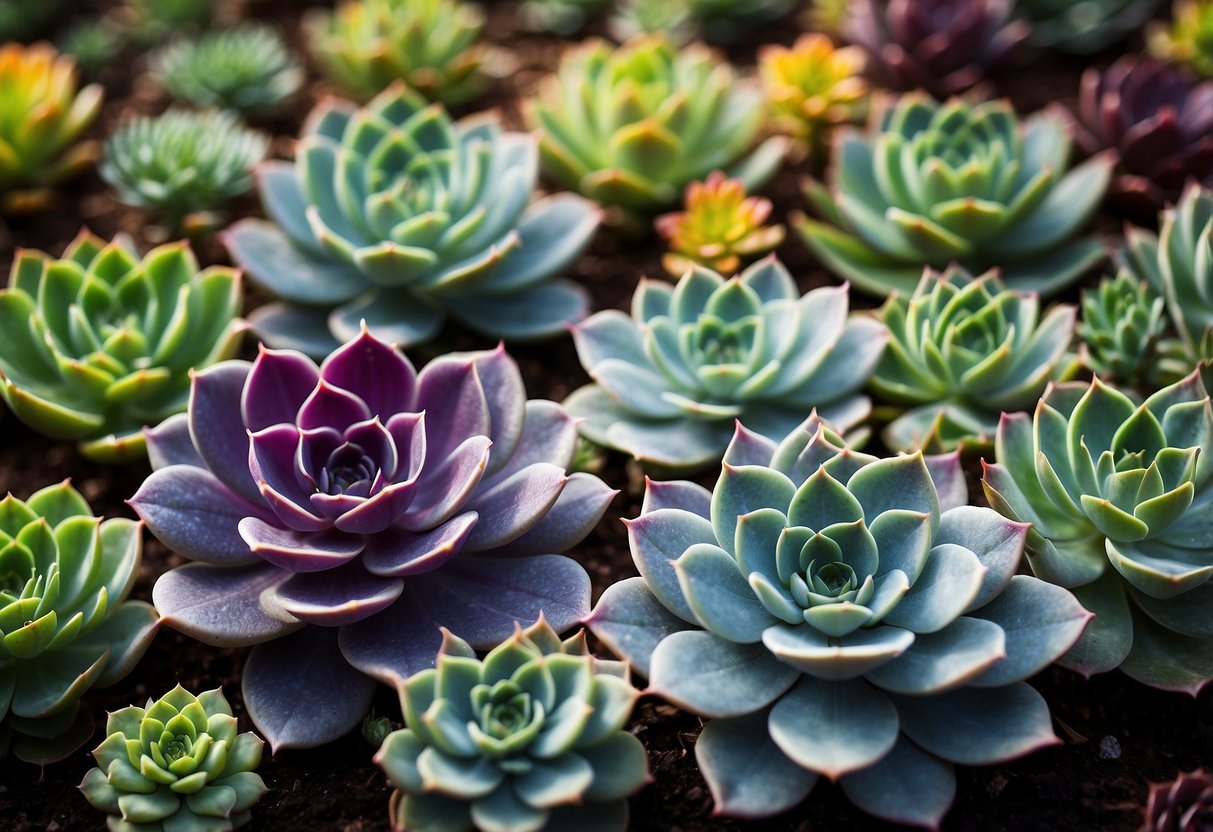
Add a splash of color to your garden with vibrant echeveria varieties. One popular choice is Echeveria ‘Perle von Nurnberg’ with its soft, gray-blue leaves edged in pink.
For something eye-catching, try Echeveria ‘Blue Curls’. Its blue-green leaves are fringed with shades of pink and plum.
Another great option is Echeveria ‘Atlantis’. Its blue-green leaves turn a lovely pink with enough sunlight.
2) Create a Colorful Echeveria Border

To make a colorful Echeveria border, start by choosing a sunny spot. Echeverias love sunlight and their colors become more vibrant.
Arrange the plants in clusters. Mix different varieties like Echeveria ‘Perle von Nurnberg’ and Echeveria ‘Atlantis’. This adds a pleasing mix of colors and shapes.
Make sure the soil drains well. Echeverias don’t like wet feet. You can add some sand or gravel to the soil to provide good drainage. This keeps your border healthy and beautiful.
3) Incorporate Echeveria in Rock Gardens
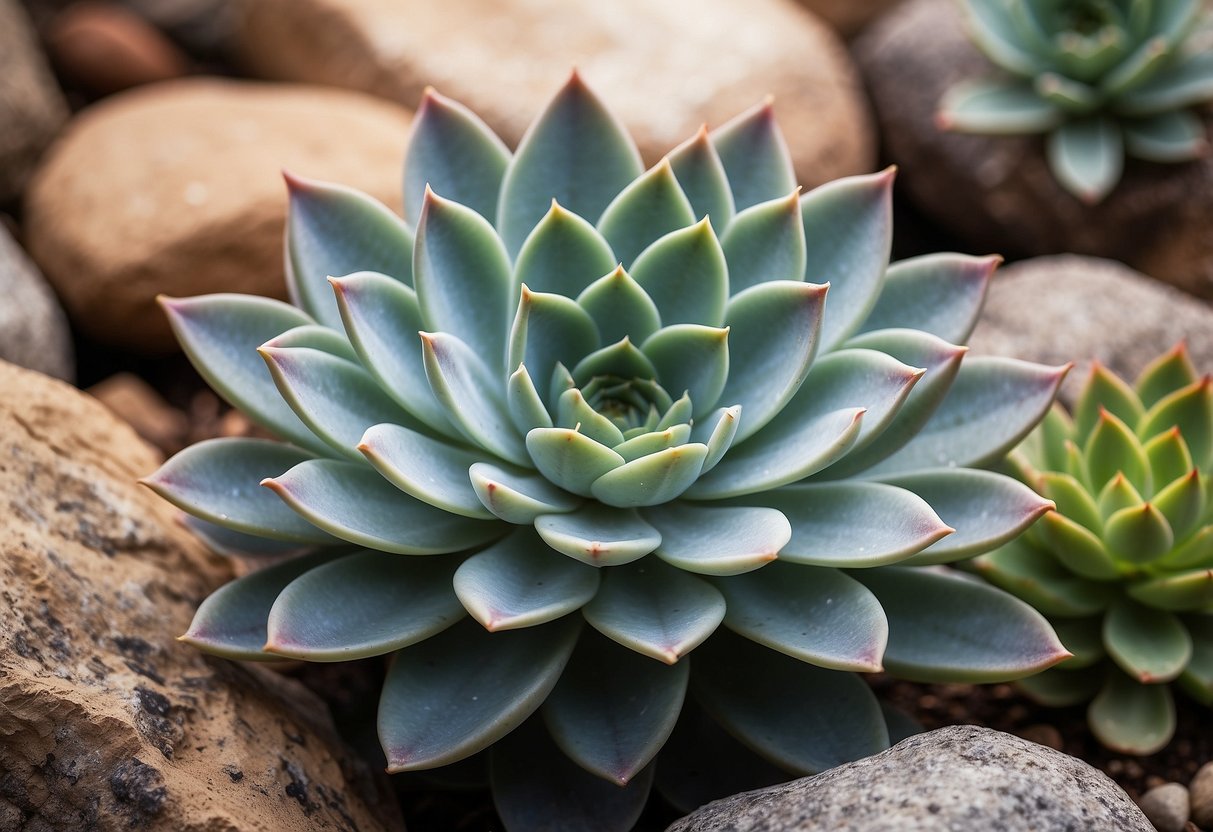
Echeveria is perfect for rock gardens thanks to its compact size and striking rosette shape.
You can plant Echeveria in the crevices of rocks to add color and texture.
Choose varieties like Painted Echeveria with its pale blue-green and burgundy-red foliage for a vibrant touch.
Echeveria thrives in well-draining soil, making it ideal for spots between rocks and pavers in your rock garden.
4) Design an Echeveria Succulent Wreath

Creating an Echeveria succulent wreath is a fun and creative project. Start by choosing a wire frame and lining it with moss. Secure the moss with floral wire.
Next, plant various Echeveria varieties into the moss. You can use hot glue to fix the plants in place.
Hang your wreath in a spot with bright, indirect light. Water sparingly, ensuring the moss stays slightly damp. Your succulent wreath will be a lovely and unique addition to your decor. For more ideas, visit Succulent Wreath DIY.
5) Mix Echeveria with Other Succulents
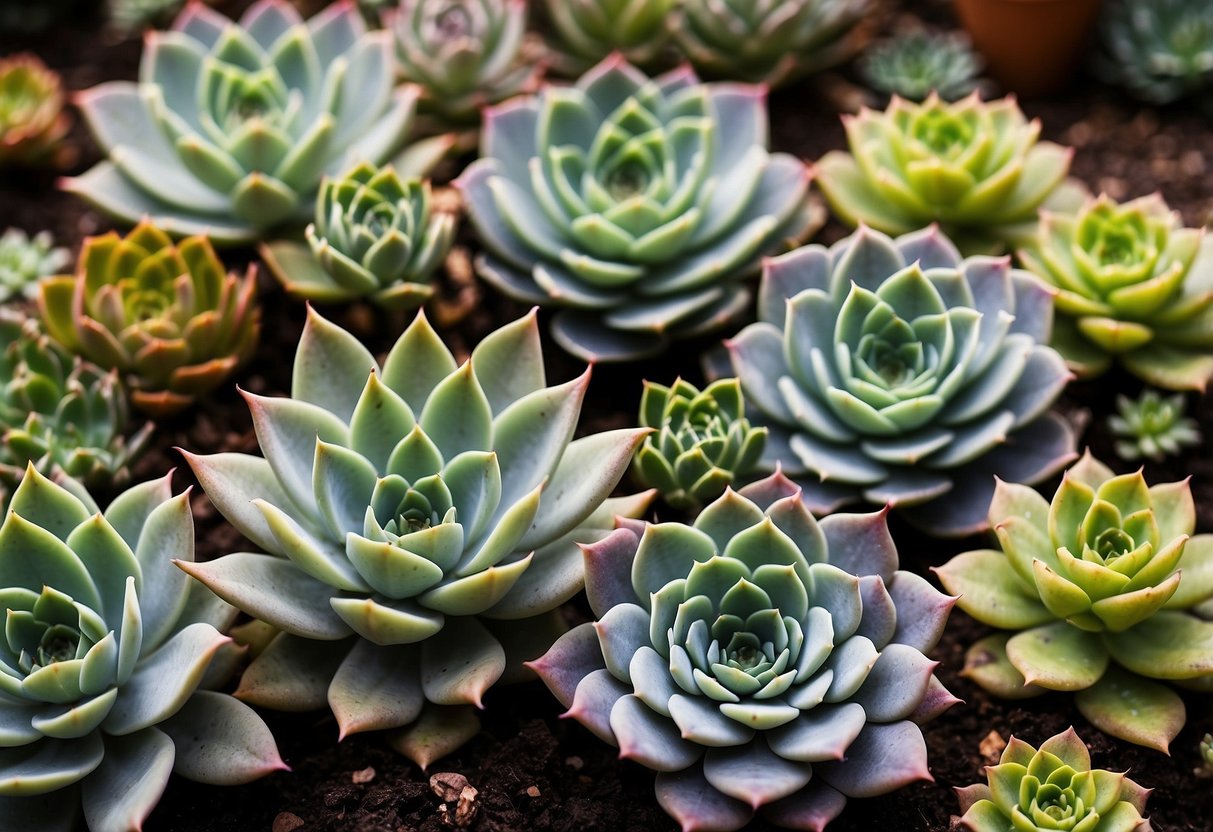
You can create stunning garden displays by mixing Echeveria with other succulents. Echeveria pairs well with plants like Sedum, Aloe, and Haworthia, which share similar sunlight and water needs.
Try adding trailing succulents such as string of pearls or donkey’s tail for a beautiful hanging garden effect. These combinations can add varied textures and colors to your garden space.
6) Echeveria Hanging Planters
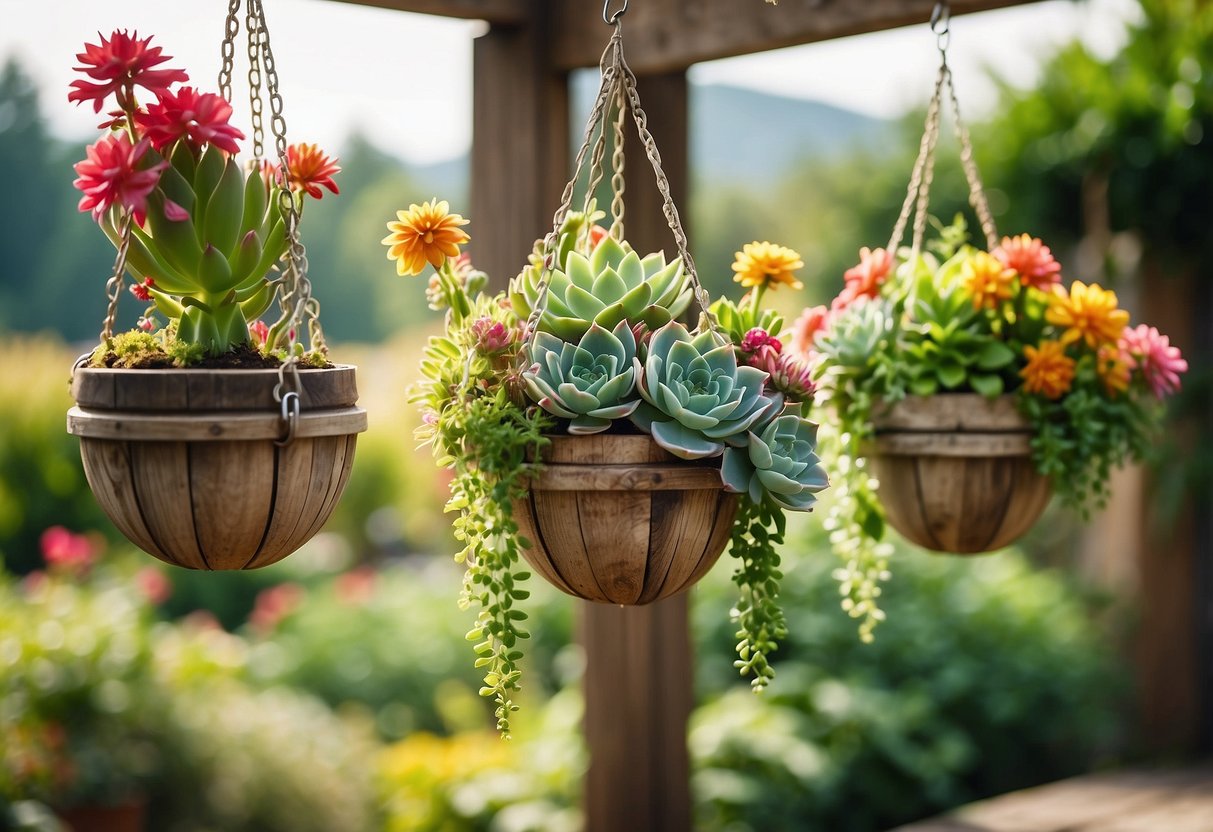
Echeveria hanging planters add a unique touch to any garden. They thrive in well-draining soil, so use a mix designed for succulents. Choose a sunny spot, avoiding intense afternoon sun.
These planters are perfect for small spaces. Hang them on patios, balconies, or even indoors near bright windows.
Remember to water them sparingly. Allow the soil to dry out completely between watering. Overwatering can lead to root rot. Enjoy your beautiful, low-maintenance hanging garden!
7) Echeveria Fairy Garden
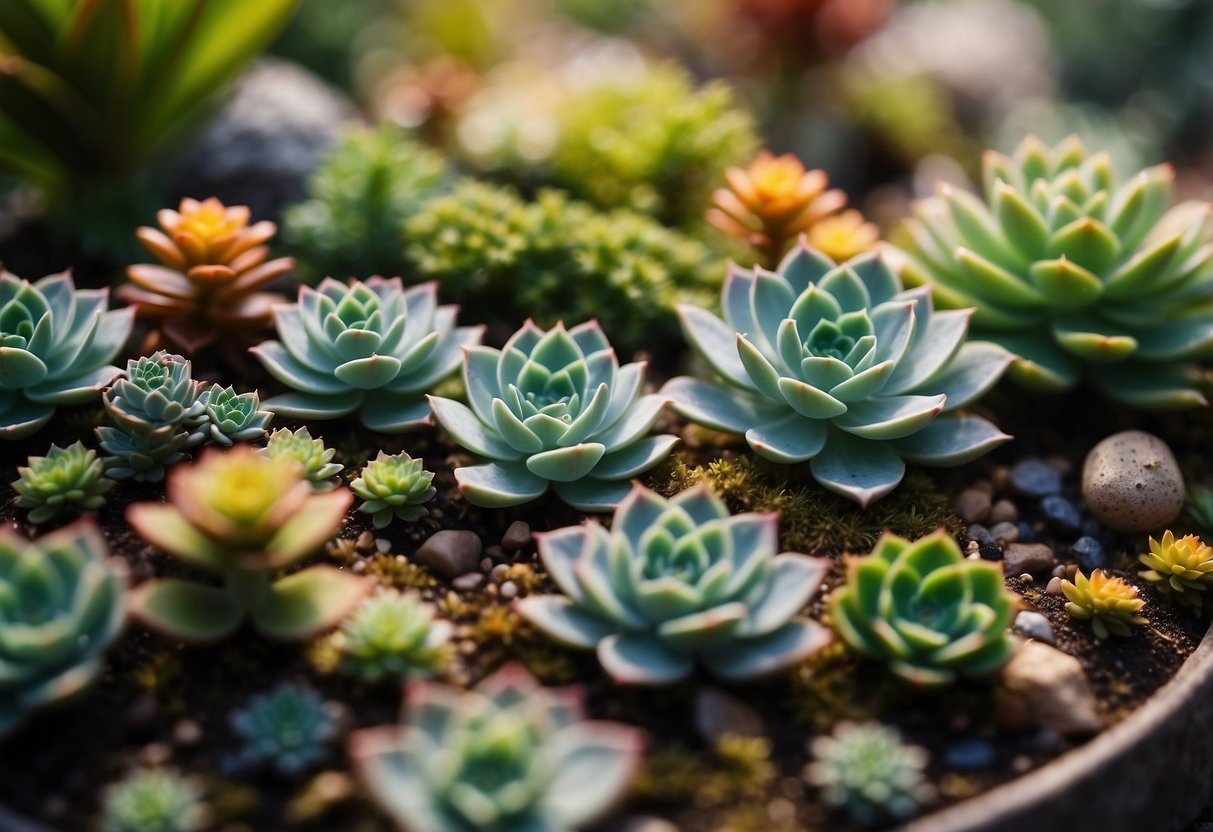
Create a magical space by combining beautiful Echeveria succulents with whimsical fairy garden accessories. Echeveria’s compact, rosette shapes are perfect for tiny landscapes.
Use mini figurines, tiny houses, and miniature furniture to build your fairy garden. Add colorful, blooming plants and greenery for more contrast.
Use vining plants like morning glory and sweet peas to fill trellises, making the garden even more enchanting. Add some ferns, moss, and creeping thyme for dewy ground cover. This will make your Echeveria fairy garden come to life.
8) Terrarium with Echeveria

Creating a terrarium with Echeveria is a fun way to bring greenery inside your home. These succulents are perfect for terrariums thanks to their low water needs.
Choose a glass container with an opening to allow airflow. Add layers of pebbles, charcoal, and well-draining soil.
Select healthy Echeveria varieties, like Echeveria ‘Blue Atoll’ or Echeveria secunda ‘Azulita’. Place them in the soil, spacing them evenly.
Water sparingly, letting the soil dry out between watering. Enjoy your mini indoor garden! For more creative ideas, check out these terrarium ideas.
9) Echeveria in a Vertical Garden
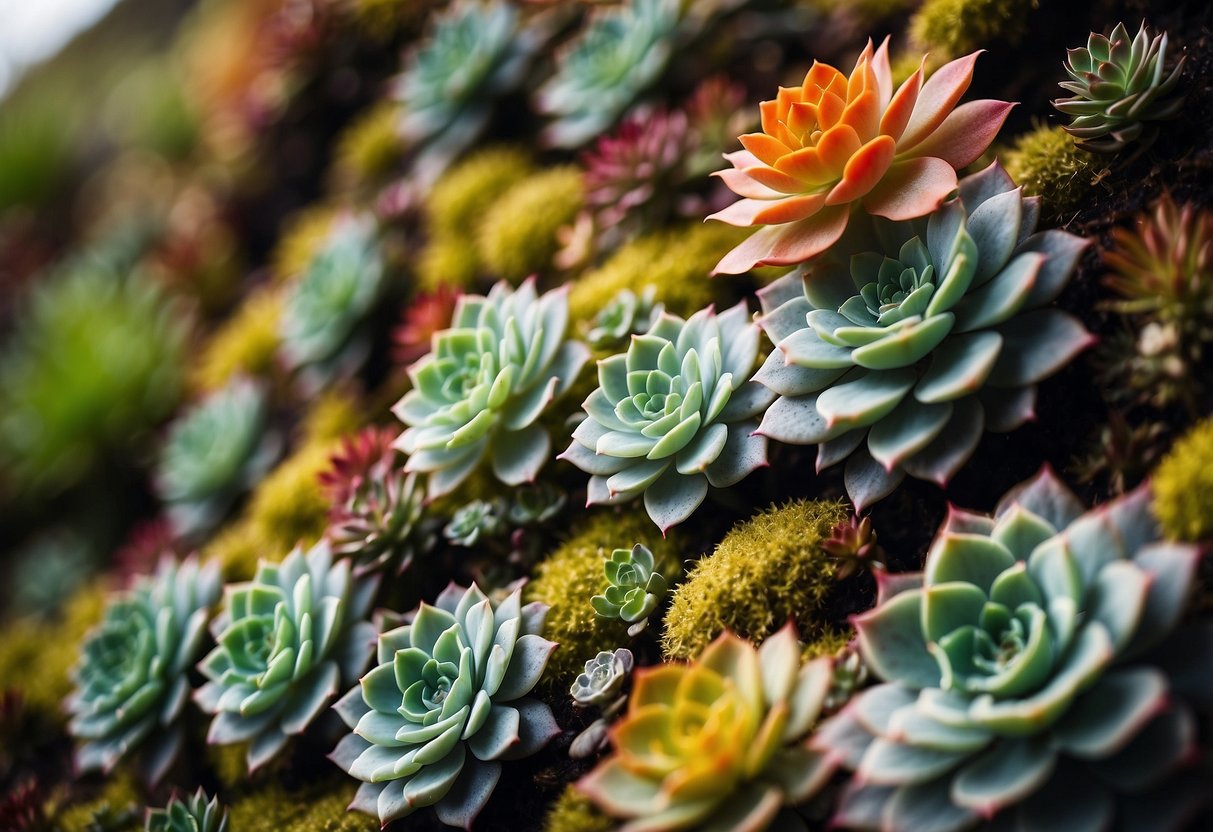
Echeveria plants are perfect for vertical gardens because they have a compact rosette shape.
To start, choose a sturdy frame and fill it with well-draining succulent soil.
Next, select healthy Echeveria cuttings and let them dry until a callus forms.
Plant the callused ends into the soil and water sparingly.
With proper care, your vertical garden will thrive and brighten up any space.
For more ideas, visit Stay Green Garden.
10) Echeveria Centerpiece Ideas
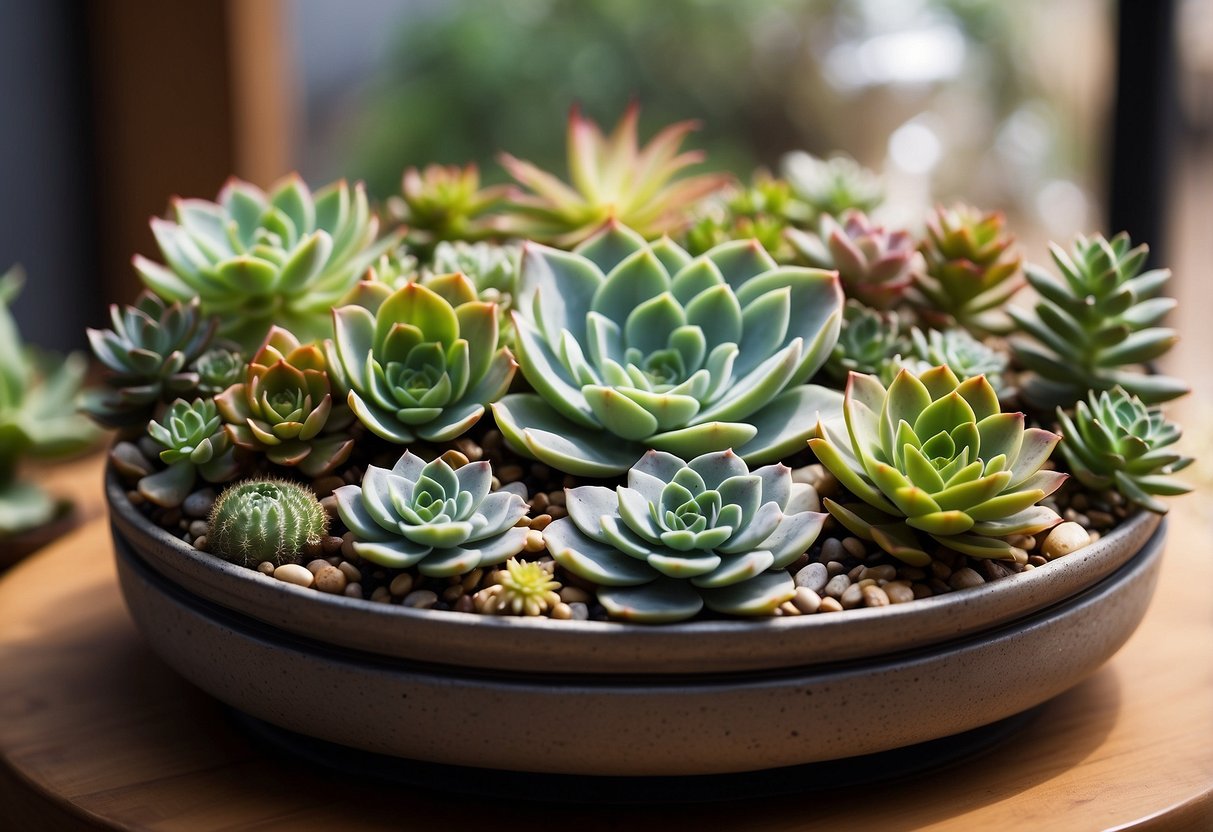
Brighten up your table with an echeveria-filled terrarium. These glass containers highlight the vivid colors of the succulents and keep them safe.
Use a shallow bowl and plant echeverias closely together. Their rosette shapes create a lush, green centerpiece.
Combine echeverias with small rocks and moss. This adds texture to your display and makes it more eye-catching.
Designing Your Echeveria Garden
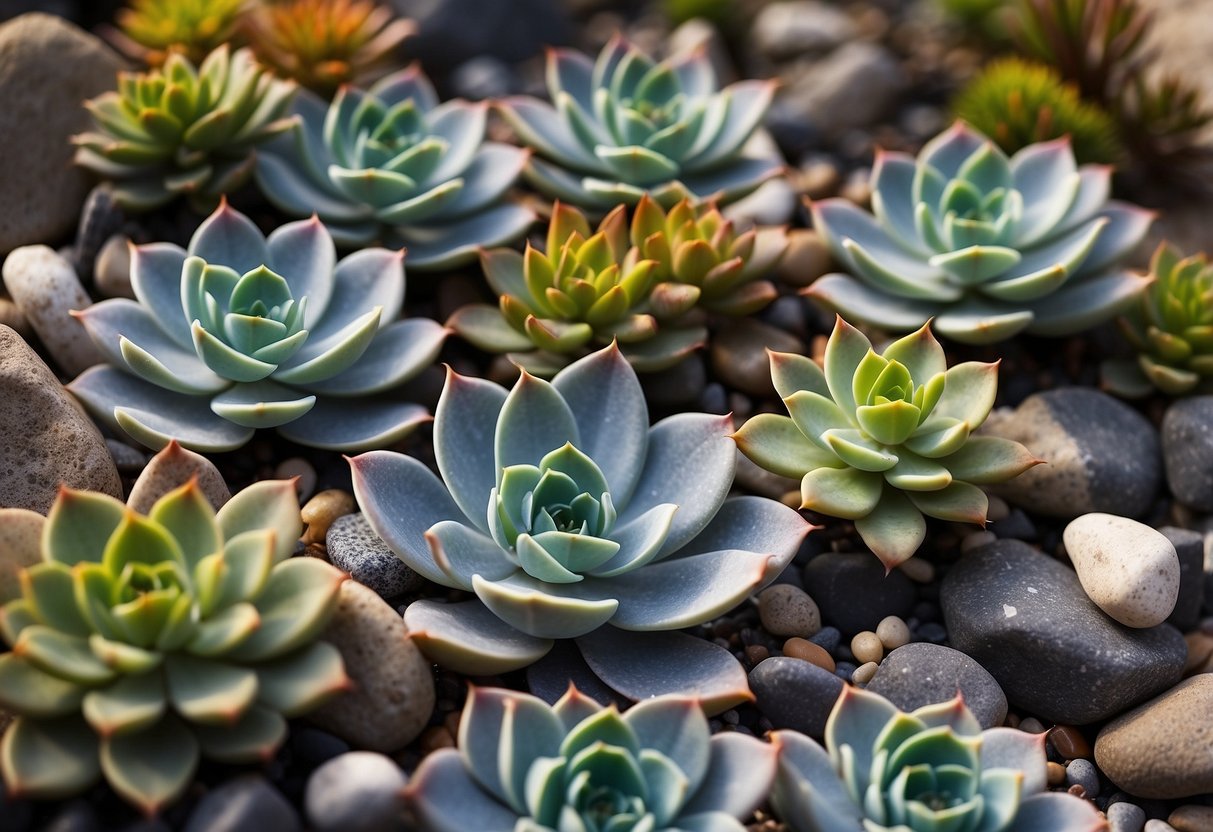
Creating a beautiful Echeveria garden involves selecting the right varieties, preparing suitable soil, and arranging the plants in an eye-catching manner. Each step is vital to ensure your garden thrives and looks stunning.
Choosing the Right Echeveria Varieties
Choosing suitable Echeveria varieties depends on factors like climate and aesthetic preferences. Varieties like Echeveria elegans are known for their rosette shapes and soft hues. If you prefer more vibrant colors, consider Echeveria ‘Perle von Nurnberg’ with its striking gray-blue leaves.
Another popular choice is the Painted Echeveria (Echeveria nodulosa), which features burgundy-red foliage. Consider combining different varieties to add diversity and visual interest to your garden.
Ideal Soil and Potting Mix
Echeverias need well-draining soil to prevent root rot. Use a mix that includes sand, perlite, or pumice to enhance drainage. Many gardeners find success with commercial cactus or succulent mixes.
Prepare the soil by ensuring it is loose and dry before planting. Adding a layer of gravel or small rocks at the bottom of your pots or garden bed helps with drainage. You can also mix in a bit of organic matter, like compost, to provide nutrients without retaining too much moisture.
Arranging Echeveria Artfully
When arranging your Echeverias, think about contrasting shapes and colors. For example, place tall varieties behind shorter ones to create depth. Consider using Echeveria in rock gardens or between stepping stones for a natural look.
Group plants with similar care requirements together. Use pots of varying heights and styles to add more visual interest. Remember to leave enough space between plants to allow air circulation and room for growth.
A thoughtful arrangement can transform your Echeveria garden into a delightful, living artwork.
Caring for Echeverias

Echeverias are delightful succulents that require specific care to thrive. Learn the best watering techniques, fertilizing tips, and ways to manage pests and diseases to keep your plants healthy.
Watering Techniques
Watering Echeverias properly is key to their health. Overwatering can lead to root rot, while underwatering may cause stunted growth. Water sparingly, allowing the soil to dry out completely between watering sessions. Generally, watering once every two weeks is sufficient, but this can vary based on climate and pot size.
During the winter, reduce watering even more. Ensure that you use a pot with drainage holes to prevent water from sitting at the bottom. For Echeveria propagation, water lightly until new roots form. Remember, it’s better to underwater slightly than to overwater.
Fertilizing Tips
A balanced fertilizer once a month during the spring and summer can help Echeverias grow strong. Use a diluted liquid fertilizer, mixing it to half the strength recommended on the package. Avoid fertilizing in the fall and winter when the plants are in their dormancy period.
Too much fertilizer can burn the roots and damage the plant. Apply the fertilizer after you have watered the plant, not when the soil is dry. This helps to prevent root burn and ensures the nutrients are evenly distributed.
Pest and Disease Management
Echeverias are generally hardy, but they can still suffer from pests like mealybugs and aphids. Inspect your plants regularly to catch any infestations early. If you notice pests, treat them with insecticidal soap or a mix of water and neem oil.
Diseases such as root rot can be prevented by using well-draining soil and being cautious with watering. If you notice your plant’s leaves turning black or mushy, it may be a sign of rot. Remove affected parts and adjust your watering habits. Regularly cleaning your tools and pots can also help prevent disease spread.
Enhancing Your Garden with Echeverias
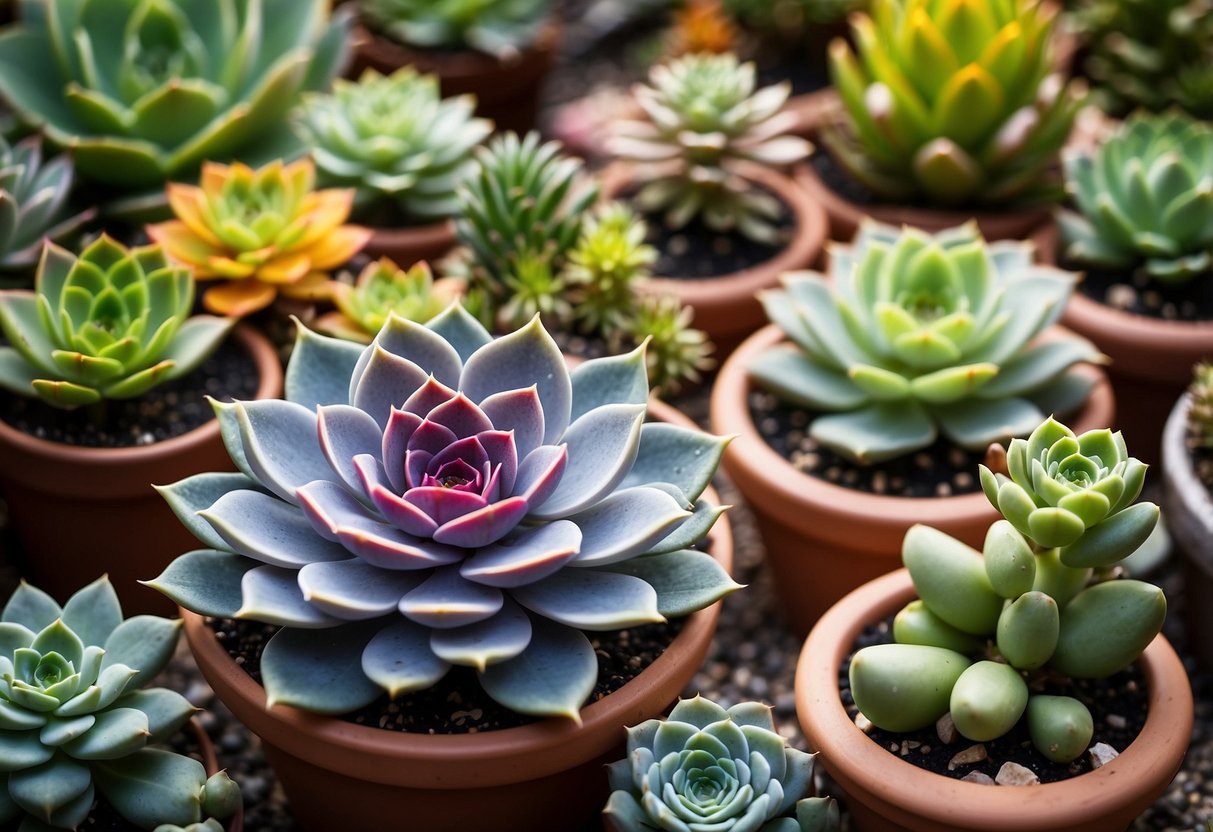
Echeverias bring vibrant colors and unique rosette shapes to any garden. They fit perfectly into rock gardens, mix well with other plants, and have their own care needs by season.
Using Echeverias in Rock Gardens
Echeverias are ideal for rock gardens due to their compact size and colorful rosettes. Their shape and structure make them stand out among stones. You can place them in small crevices or larger gaps between rocks.
They thrive in well-draining soil, which rock gardens provide, ensuring their roots don’t stay wet. Using a mix of various Echeveria species can create an eye-catching display with different colors and textures. Their drought-tolerant nature also means they require minimal watering.
Consider combining Echeverias with other succulents that have similar care requirements. This creates a cohesive look and makes maintenance easier. Remember to give them plenty of sun to highlight their colors, but protect them from intense afternoon light to avoid leaf burn.
Echeveria and Companion Plants
Pairing Echeverias with the right companion plants adds diversity and interest to your garden. Look for plants that share similar sunlight and watering needs.
Sedum and Sempervivum are excellent choices. They, like Echeverias, prefer well-draining soil and plenty of sunlight. These plants can create a layered effect, with varying heights and shapes.
You can also mix in some non-succulent companion plants. Grasses like Blue Fescue add height and movement. Low-growing perennials like Thyme can fill in gaps, offering a carpet-like ground cover. This not only enhances the visual appeal but also reduces weeds.
Seasonal Care and Maintenance
Echeverias need specific care depending on the time of year. In summer, ensure they get enough sunlight and water them sparingly. Allow the soil to dry out between watering to prevent root rot.
During winter, they need protection from frost. Move potted plants indoors or cover outdoor plants with frost cloth. Reduce watering during this time since they go dormant and require less moisture.
In spring and fall, you can propagate Echeverias. Remove offsets (baby plants) from the main rosette and plant them in separate pots. This is also a good time to check for pests or diseases and to refresh the soil if needed.







